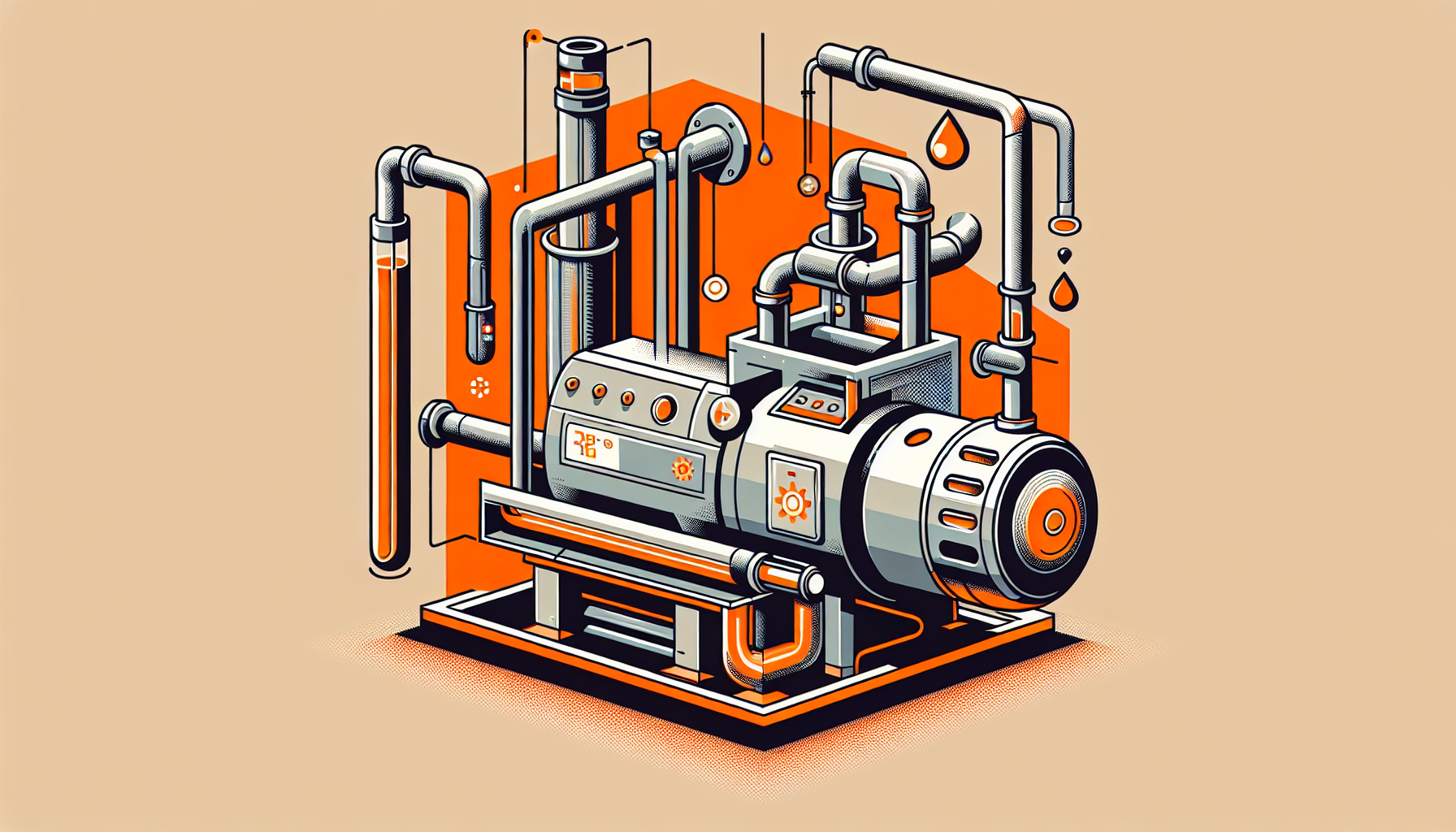A 2 ton geothermal heat pump is your eco-friendly ticket to year-round comfort. Imagine slashing your energy bills and shrinking your carbon footprint, all while enjoying the perfect indoor climate. It’s not a distant dream—it’s what a 2 ton geothermal system promises.
Ever felt the sting of a high utility bill or the guilt of an overworked AC unit? You’re not alone. This article is your guide to turning those pains into gains with geothermal technology.
I’ve seen firsthand the difference a geothermal setup can make in a home like yours—cozy winters, cool summers, and the sweet satisfaction of eco-efficiency. Let’s dive into how a 2 ton geothermal heat pump can revolutionize your home’s heating and cooling.

Geothermal Heat Pumps: An Overview

Harnessing the Earth’s Consistent Temperatures
Imagine tapping into the stable warmth of the earth’s crust right beneath your feet. That’s exactly what a geothermal heat pump does. It’s a system that transfers heat to and from the ground, using the earth as a heat source in winter and a heat sink in summer. For you, the eco-conscious homeowner, this means a consistent and efficient way to heat and cool your home.
The Mechanics of a 2 Ton Geothermal Unit
A 2 ton geothermal heat pump isn’t about weight; it’s about capacity. This unit can move the equivalent of two tons of heat per hour. Picture a system circulating a water-based solution through a loop of buried pipes. In heating mode, the earth’s natural warmth is absorbed by the fluid, then concentrated and transferred indoors. In cooling mode, it’s reversed, pulling heat from your home and depositing it into the ground.
Types of Geothermal Systems for Your Home
There’s a variety of geothermal systems, each suited to different needs. Closed-loop systems can be horizontal, vertical, or pond/lake configurations, depending on your property’s characteristics. Open-loop systems, on the other hand, utilize groundwater directly. Each type has its own application, but all share the common thread of eco-efficiency.
Eco-Friendly Heating and Cooling
Switching to a geothermal system is a significant step toward reducing your carbon footprint. These systems don’t rely on fossil fuels, cutting down on greenhouse gas emissions. Plus, they’re incredibly efficient-geothermal units can achieve 300% to 600% efficiency on the coldest of nights, compared to 175%-250% for air-source heat pumps.
Real-World Applications: From Homes to Commercial Spaces
Whether it’s for your cozy bungalow or a sprawling commercial complex, geothermal heat pumps are versatile. They can handle the heating and cooling demands of various settings, providing a sustainable solution that’s as kind to the planet as it is to your wallet.
Choosing the Right 2-Ton Geothermal Heat Pump

Understanding Capacity and Your Home’s Needs
When you’re in the market for a 2-ton geothermal heat pump, you’re looking at a system that’s designed to handle the heating and cooling demands of a moderately-sized home. Think of it like this: the "2-ton" part is a measure of the unit’s capacity to move heat. In the world of geothermal, this translates to roughly 24,000 BTUs per hour. Now, you need to ensure this aligns with your home’s specific requirements. Too small, and it’ll be like trying to fill a bathtub with a teaspoon. Too large, and you’re wasting energy like leaving the tap running all day.
Efficiency Ratings: The SEER and COP Story
Efficiency is the name of the game with geothermal heat pumps. SEER (Seasonal Energy Efficiency Ratio) and COP (Coefficient of Performance) are your best friends here. They tell you how well your system converts energy into heating or cooling. You want high numbers in both for the best bang for your buck. Imagine SEER as your car’s miles per gallon on the highway, and COP as the miles per gallon in city traffic. A 2-ton geothermal heat pump with high SEER and COP ratings is like a hybrid car that sips fuel both on the freeway and at the stoplight.
Balancing Installation Costs with Long-Term Savings
Let’s talk money. Geothermal heat pumps, including the 2-ton variety, come with a higher upfront cost. But here’s the kicker: they can slash your energy bills significantly over time. It’s a bit like buying an espresso machine instead of hitting the coffee shop every day. The initial investment is steep, but the daily savings add up. You’ll need to weigh the installation costs against the potential energy savings.
Exploring Models and Manufacturers
Diving into the sea of available 2-ton geothermal heat pump models and manufacturers can be overwhelming. But it’s indispensable to shop around. Different brands offer unique features, warranties, and customer support. It’s like choosing a smartphone; you want the one that fits your lifestyle and needs. Do your homework, read reviews, and don’t be afraid to ask the tough questions. After all, this is a significant investment in your home’s comfort and your eco-friendly lifestyle.
Maintenance and Lifespan: The Long Haul
Maintenance is the unsung hero of geothermal heat pump longevity. A 2-ton system is no exception. Regular check-ups are your best defense against unexpected breakdowns. Think of it as taking your car in for oil changes and tire rotations; it keeps things running smoothly. With proper care, your geothermal heat pump can last up to 25 years, making it a faithful companion in your quest for sustainable living. And Most importantly, a well-maintained system is an efficient one, keeping those energy bills in check.
In the end, choosing the right 2-ton geothermal heat pump is about understanding your home’s needs, prioritizing efficiency, balancing costs with savings, and committing to maintenance. It’s a decision that speaks volumes about your commitment to sustainability and comfort. So take your time, do the research, and make a choice that you-and the planet-can be proud of.






